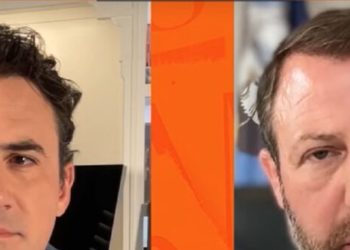About 4,000 National Guard troops and 700 Marines have been sent to Los Angeles as of Tuesday morning, after President Trump bypassed California leaders who said federal forces were not needed to respond to mostly peaceful protests.
Here’s how the deployment compares to past military activations on domestic soil responding to social unrest.
2021: Attack on the Capitol
In 2021, officials in Washington initially requested 340 National Guard members to help respond to planned protests on Jan. 5 and Jan. 6, according to the military.
As the protests on Jan. 6 against the 2020 presidential election results deteriorated, with a violent mob attacking police officers and the Capitol, the mayor of Washington D.C., Muriel Bowser, requested assistance, and 1,100 D.C. National Guard members were sent. Later that night, the acting defense secretary at the time, Chris Miller, mobilized 6,200 more National Guard members from other states to ensure peace in the days leading up to former President Joseph R. Biden’s inauguration.
2020: George Floyd Protests
After protests sprung up around the United States in response to the police killing of George Floyd in Minneapolis, National Guard members were deployed to several states.
As of June 3, 2020, the National Guard had deployed more than 18,000 members in 28 states to respond to civil unrest related to Mr. Floyd’s murder at the request of the states’ governors. Another 42,000 National Guard members were activated at the same time for the coronavirus pandemic response.
In California, 9,600 soldiers were deployed across the state after Mr. Floyd’s killing, according to a report by the California Governor’s Office of Emergency Services. The report said the demonstrations were mostly peaceful, but after especially destructive protests in Los Angeles, Gov. Gavin Newsom deployed 1,000 troops each to the city and county. A report commissioned by the Los Angeles City Council said 2,800 National Guard members were sent there.
1992: Los Angeles Riots
There was widespread rioting, vandalism and violence in Los Angeles in 1992 in protest of police brutality after a jury found four police officers not guilty even though the officers had been videotaped beating Rodney King, a Black motorist.
President George H.W. Bush ordered the National Guard to respond at the request of California’s governor and the mayor of Los Angeles.
Nearly 2,000 National Guard troops were activated after the protests began on April 29, 1992, the Los Angeles Times reported in 1992. Later that night, state leaders said they had asked for more National Guard members to be deployed, bringing the total to 6,000.
On May 3, 1992, nearly 8,500 members of the Marines, Army and National Guard were in Los Angeles County, the Los Angeles Times reported.
1970: Kent State
The mayor of Kent, Ohio, in May 1970 requested Ohio National Guard members be sent to Kent State University to address anti-Vietnam War protests taking place there, and on other college campuses across the country. Nearly 1,000 troops were at the university on May 3. The next day, members of the Ohio National Guard fired into a crowd of demonstrators, killing four students and wounding nine.
Civil Rights Era
Until Mr. Trump deployed National Guard members to Los Angeles on Saturday, a president had not used federal troops without the permission of a state’s governor since the civil rights movement.
In the 1950s and 1960s, National Guard members were deployed to ensure the peaceful expansion of rights, such as desegregating schools.
The day after Martin Luther King Jr. was assassinated in April 1968, 6,000 troops from the National Guard, Army and Marines were activated in Washington to respond to protests. In the days that followed, more than 13,000 soldiers patrolled the city.
Amanda Holpuch covers breaking news and other topics.
The post Is 4,700 federal troops a big deployment? appeared first on New York Times.




